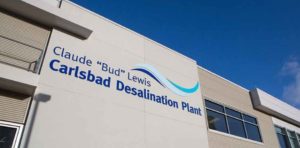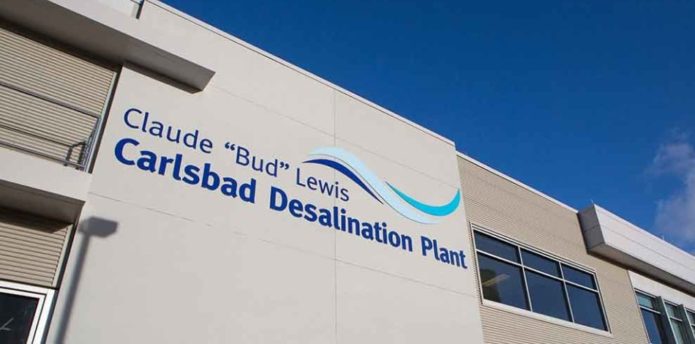
Pictured is the Claude “Bud” Lewis Carlsbad Desalination Plant, a key component of the San Diego County Water Authority’s program of diversifying water supplies.
The Claude “Bud” Lewis Carlsbad Desalination Plant in December celebrated delivering 40 billion gallons of drought-resilient drinking water to San Diego County during its first three years of commercial operations at the plant. The Carlsbad Desalination Plant provides San Diego County with more than 50 million gallons of high-quality, locally controlled, water every day. It’s a foundational water supply that minimizes the region’s vulnerability to drought or other water supply emergencies. The Carlsbad plant also is the largest, most technologically advanced and energy-efficient desalination plant in the nation.
The Carlsbad plant is the result of a 30-year Water Purchase Agreement between the plant’s developer and owner, Poseidon Water, and the Water Authority for the production of up to 56,000 acre-feet of water per year.
The desalination plant sits on six acres next to the Encina Power Station on land owned by NRG, a Fortune 200 energy company. NRG is in the process of shutting down and decommissioning the power station, and the desalination plant will convert to an independent operation over the next few years. It will be the first desalination plant to comply with the 2015 California Ocean Plan Amendment to advance ocean water as a reliable supplement to traditional water supplies while protecting marine life and water quality. Additionally, Poseidon Water is protecting and preserving the coastal environment by preparing to take over NRG’s responsibilities as the steward of the Agua Hedionda Lagoon and responsibility for its ongoing preservation.
The plant, which provides ten percent of the region’s water supply, is a major component of the Water Authority’s multi-decade strategy to diversify the region’s water supply portfolio. The Water Transfer Agreement with the Imperial Irrigation District, a cornerstone of the Quantification Settlement Agreement, is another critical component of that water diversification policy, along with an ongoing conservation program in San Diego and the expansion of water reuse in the region.
In other news…
President Donald Trump has signed the Farm Bill, which could be good news for the Salton Sea as components of the bill could provide funding for Salton Sea restoration through a streamlined non-competitive grant process. Though the sea is not specifically mentioned in the Farm Bill, Legislation was drafted for the bill in such a way as to waive limits that could have made securing funding for the sea difficult. Under the signed bill, projects on playa, like that at the Salton Sea, can now qualify for USDA funding.
As stated in a previous blog on the Farm Bill, this is very good news after the recent failure of a water bond that would have provided an additional $200 million for the sea. Should funding be awarded to the sea through the Farm Bill, it would be an important step toward a greater partnership between the State and Federal governments to ensure Salton Sea restoration is addressed. Efforts are now underway through the Salton Sea Authority to secure federal funding, and this will be an issue to watch closely in 2019.
